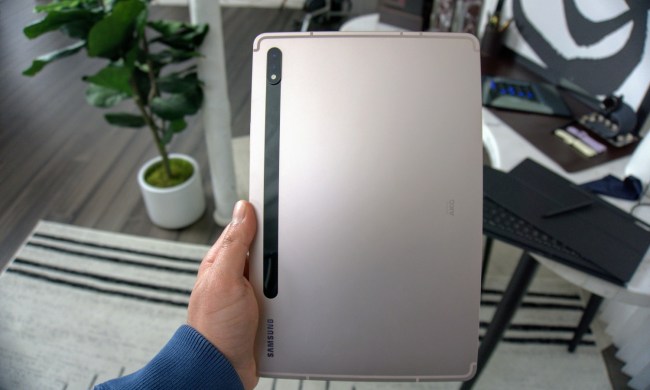The TCL NXTWEAR AIR wearable display glasses come barely six months after the release of the company’s first-generation NXTWEAR G wearable display, and it appears TCL has listened to some feedback and improved the glasses where they needed to the most: Comfort, fit, and wearability. The concept, revealed as part of TCL’s CES 2022 range of products, remains the same, so think of the glasses as the equivalent of having a 140-inch screen right in front of your eyes. These aren’t Google Glass competitors, but more like a private cinema.
Crucially, TCL has made the NXTWEAR AIR lighter than the NXTWEAR G, and the glasses weigh 75 grams with the standard lenses in place, compared to the 100 grams of the first-generation pair. A 30-gram reduction in weight should make the NXTWEAR Air less fatiguing to wear for any length of time. Looking at the images, TCL has also changed the nose pad design, but it’s not clear how adjustable the new system will be.

The front plate is interchangeable, allowing you to alter the look of the glasses. The standard look will be familiar to anyone who has seen a pair of Ray-Ban Wayfarers, or alternatively, you can select a curvier look or a front plate that’s more like the NXTWEAR G’s space-age look. You will have to pay extra for the different front pieces, which is unfortunate. The early details don’t mention prescription lens support for NXTWEAR AIR.

The NXTWEAR AIR will connect to many different phones or laptop computers using a USB Type-C connection. They do not have a power source, relying instead on energy from the USB. You look at dual 1080p resolution Micro OLED screens, delivering that 140-inch screen viewing experience. The NXTWEAR AIR can be used for movies, games, and private use of your computer or phone. Built-in stereo speakers deliver audio, plus there’s Bluetooth so you can use wireless headphones or a wireless game controller too.
TCL has not announced the price of the availability of the NXTWEAR AIR yet. The NXTWEAR G cost 599 euros upon release, or around $680, so expect a similar price for this new edition. TCL released the first glasses in South Korea, Australia, and Europe, plus it was looking at making deals with video providers to sell the NXTWEAR G as part of a viewing package. Whether it’s continuing the same strategy with the NXTWEAR AIR isn’t clear yet, and neither are details on any possible U.S. release.



